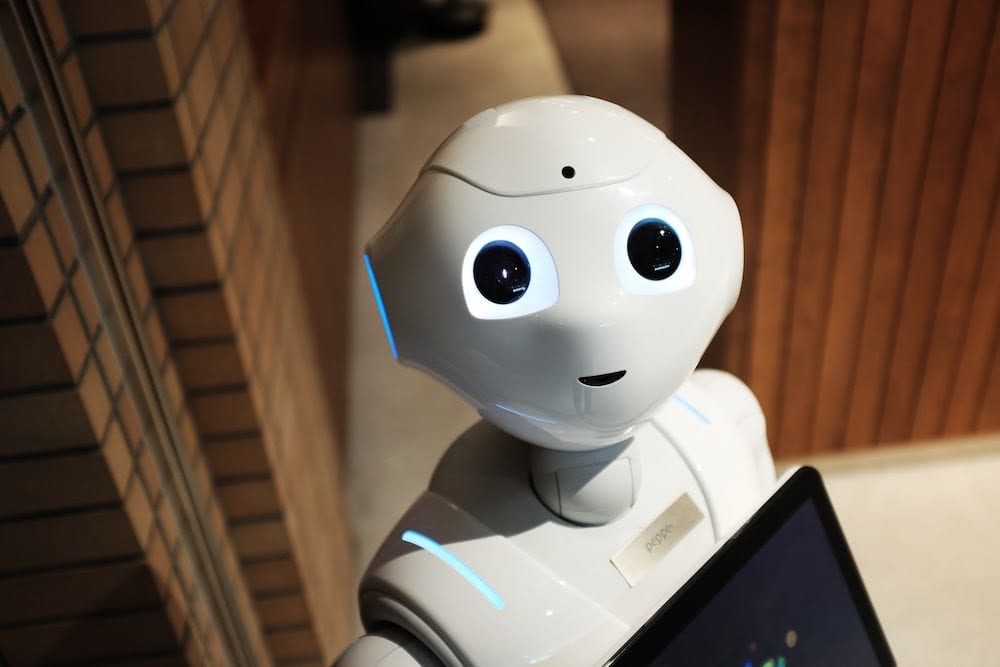Machine learning (ML) and deep learning (DL) are both sub-disciplines of artificial intelligence (AI). They’re very similar in certain ways because they have the same purpose: an automated learning process. The first deep learning vs machine learning difference is that deep learning is a type of machine learning.
People often want to know which approach is better when it comes to machine learning vs deep learning, but there isn’t one simple answer. They are both useful in different cases, and it depends on the size of your dataset and how much control you want over the learning process. This guide will help you start to understand the differences between ML and DL.
What Is Machine Learning?
Machine learning (ML) is a sub-discipline of artificial intelligence that deals with a machine’s ability to learn without human intervention. With ML, computers can identify patterns, errors, and trends in data. Even though we use ML in our daily lives, many people are confused about what machine learning is because the term sounds so futuristic.
Machine learning can be used to predict the outcome of a situation or replicate a human’s actions. There are many ML algorithms, such as linear regression, decision trees, logistic regression, and Naive Bayes classifiers. There are three kinds of ML learning: reinforcement, supervised, and unsupervised learning:
- Supervised learning. This is an ML approach in which data is fed into a computer model to generate a specific expected output. For example, machines can be taught how to differentiate between coins because each one has a particular weight. The device will then be able to deduce the type of coin based on its weight. This is called labeled data.
- Unsupervised learning. Unsupervised learning does not use any labeled data. This means that the machine must independently identify patterns and trends in a dataset. The machine takes a training dataset, creates its own labels, and makes its own predictive models.
- Reinforcement learning. RL is like teaching a child to read. If the child doesn’t read a sentence correctly, they will be told they made a mistake, and how they can improve. Then, they can identify and correctly pronounce a word the next time they see it. The same thing happens with ML reinforcement learning.
What Is Deep Learning?
Deep learning (DL) is an advanced form of machine learning and is inspired by the way the human brain works. DL is an artificial neural network that mimics human intelligence. It is considered more efficient than machine learning. DL is used for complex tasks like image classification, recognizing speech, and translations rather than simple predictions.
Have you ever wondered how Google can translate almost every single page on the Internet? Or how it classifies images based on who is in the photo? Deep learning algorithms are responsible for these technological advancements.
Deep Learning vs Machine Learning: The Most Important Differences and Similarities
A debate has emerged in the AI industry over whether deep learning vs machine learning is more useful. Many professionals believe that DL is more accurate than ML, while others prefer the speed of ML. Regardless of which side you’re on, both techniques have important applications in the modern era.
Many of the things we do each day, such as typing on our smartphones or using biometric data to log in to a banking app are based on either ML or DL. Even though deep learning is a subset of machine learning, the two disciplines are very different. Let’s look at some of the differences between machine learning and deep learning in detail.
Independence
Machine learning usually requires engineers to input labeled data so that the machine can identify and differentiate between items. With deep learning, this part of the process is not necessary. Instead, the algorithm can identify features on its own by using deep neural networks. This makes DL more independent than ML, a key difference in machine learning vs deep learning training.
Independent learning isn’t always better in the case of traditional machine learning vs deep learning training. In ML, if a machine makes a mistake while identifying data, an engineer can address the problem and make an adjustment. With DL, the model will try to identify the inaccuracy on its own and act accordingly, and the engineer has limited control over the process.
Learning vs Reasoning
Machine learning describes a device’s ability to learn, while deep learning refers to a machine’s ability to make decisions based on data. The process of making decisions based on data is also known as reasoning.
This is why ML works fine for one-to-one predictions but makes mistakes in more complex situations. For instance, speech recognition or language translations done via ML are less accurate than DL. ML doesn’t consider the context of a sentence, while DL does.
The Structure
The structure of machine learning is very simple when compared to the structure of deep learning. ML may use a basic decision tree or linear regression, while DL involves a complex structure known as a multilayer artificial neural network. A learning process needs at least three layers in its neural network to be considered deep learning.
Data Requirements
Both ML and DL use datasets to learn how to perform tasks such as image identification or making predictions. These are called training datasets. The better the data the machine has access to, the more accurate its predictions will be. ML works better with smaller datasets, whereas DL works better with large datasets.
Algorithms
Both deep learning and machine learning use algorithms to explore training datasets and learn how to make predictions or decisions. The major difference between deep learning and machine learning algorithms is that deep learning algorithms are structured in layers to create a complex neural network. Machine learning uses a simple algorithm structure.
Classifications
Both ML and DL can do classification tasks. For ML, an engineer will label the key characteristics for the model to focus on when learning how to tell the difference between two classes of objects. Deep learning classifiers vs machine learning classifiers are decided by the neural network rather than a human engineer.
Performance
Most AI engineers point to deep learning vs machine learning performance as the reason why deep learning is better. It’s true that DL is usually more accurate, but it really isn’t necessary in every case. If you only need to do a simple prediction task, using DL is like using a dishwasher for one dirty spoon.
Purpose
Both ML and DL have the same goal of identifying patterns without human intervention. While there are differences in the types of cases where you should use machine learning vs deep learning, the purpose of both approaches is to make predictions by learning from existing datasets.
Machine Learning vs Deep Learning: Required Skills and Duties
DL and ML engineers are both AI professionals, and there is plenty of job demand in both machine learning and deep learning. However, the two jobs require different skills and have different duties. If you are trying to decide between pursuing a machine learning vs deep learning job, take a look at the summary of both jobs below.
Machine Learning Skills
- Computer science fundamentals. Just like any software developer, you must have a good understanding of computer science basics such as programming, computer architecture, and data structure.
- Probability and statistics. This discipline is very related to data science, so you should also have a good understanding of probability and statistics. Make sure you can solve everyday data science problems.
- Data modeling and evaluation. Data modeling skills are essential in machine learning. It is the process of defining and analyzing a dataset to come up with actionable insights.
Machine Learning Job Duties
- Developing machine learning applications. As a machine learning engineer, you must be able to develop ML applications to meet your project requirements. To do this, you need to perform problem framing, data collection, and feature engineering.
- Running machine learning tests and experiments. Machine learning requires you to conduct experiments using a variety of methods and techniques. This is a daily task of any ML engineer.
- Selecting appropriate data representation methods. Choosing how data should be represented is an important step in the statistics and prediction process. ML outputs are only as good as the datasets they learn from.
Machine Learning Salaries and Job Outlook
There are many types of jobs within machine learning, but the most common is a machine learning engineer, which is one of the best coding careers in terms of remuneration. A machine learning engineer earns around $112,792 per year, according to PayScale. Other possible positions in machine learning include machine learning research scientist, machine learning scientist, and senior machine learning engineer.
Machine learning jobs are some of the highest-paid jobs in tech because ML engineers are in high demand, but there are not many experienced professionals to fill the roles. If you want to become a machine learning engineer, you don’t necessarily need a bachelor’s degree. There are also many machine learning bootcamps that can prepare you for an ML job.
Deep Learning Skills
- Natural language processing. NLP is one of the most essential skills in AI. If you want to become a deep learning engineer, you must understand the similarities between computers and the human brain in how language is processed.
- Neural network construction. Unlike simple machine learning, deep learning relies on complex neural networks. You’ll need to know how to build neural networks with at least three layers.
- Data science skills. Remember that data science is the foundation of all AI disciplines. As a deep learning engineer, you will need to understand the fundamentals of data science.
Deep Learning Job Duties
- Develop effective deep learning systems. You’ll build neural networks out of layers of algorithms to create deep learning systems.
- Test DL modules. Just like machine learning engineers, DL engineers must run experiments and tests to make sure they are implementing the right strategies.
- Prepare large datasets. DL engineers use big data techniques to build and organize large datasets that neural networks can use to train.
Deep Learning Salaries and Job Outlook
Like machine learning engineers, deep learning engineers also usually receive a high salary because their skills are in high demand. Any job related to AI has become much more valuable as the field has continuously expanded. According to PayScale, the average annual salary of a deep learning engineer is $116,000.
Should You Become a Deep Learning Engineer or Machine Learning Engineer?

Both deep learning and machine learning skills are in high demand in the tech sector. Becoming an engineer in either sector will lead to a rewarding and lucrative career. The field you choose depends on your skills and preferences.
Advantages of Becoming a Machine Learning Engineer
Machine learning engineering is a discipline that solves real-life problems and develops practical solutions. It’s a broader field than deep learning, and there might be some overlap with DL jobs. If you like programming and thinking about how to solve problems, this could be a great tech career for you.
Advantages of Becoming a Deep Learning Engineer
One of the advantages of deep learning over machine learning is that it is a more specific kind of job, so it’s easier to find a role that exactly matches your qualifications. DL engineering is also a new field, and there is a lot of room for new discoveries. If you like the idea of pushing the boundaries of knowledge, you should consider becoming a DL engineer.
Frequently Asked Questions
Neither deep learning nor machine learning is better than the other. DL is a specific sub-category of ML, and it is used for complicated situations like language processing or search engine algorithms. On the other hand, ML is better for simple prediction tasks with small datasets.
Can I learn deep learning and machine learning at a coding bootcamp?
There are both machine and deep learning coding bootcamps. Remember that deep learning is a subfield of machine learning, so there will be some overlap in these programs. Some are suitable for complete beginners, while other programs might require some coding experience.

"Career Karma entered my life when I needed it most and quickly helped me match with a bootcamp. Two months after graduating, I found my dream job that aligned with my values and goals in life!"
Venus, Software Engineer at Rockbot
Is deep learning part of machine learning?
Deep learning is a part of machine learning. ML is the umbrella term for methods of teaching machines how to learn to make predictions and decisions from data. DL is a specific version of ML that uses layered algorithms called neural networks.
When do I use deep learning vs machine learning?
You should use deep learning vs machine learning when you have a very large training dataset that you don’t want to label yourself. With DL, the neural network analyzes the dataset and finds its own labels to make classifications. DL also requires more processing power than ML
About us: Career Karma is a platform designed to help job seekers find, research, and connect with job training programs to advance their careers. Learn about the CK publication.



